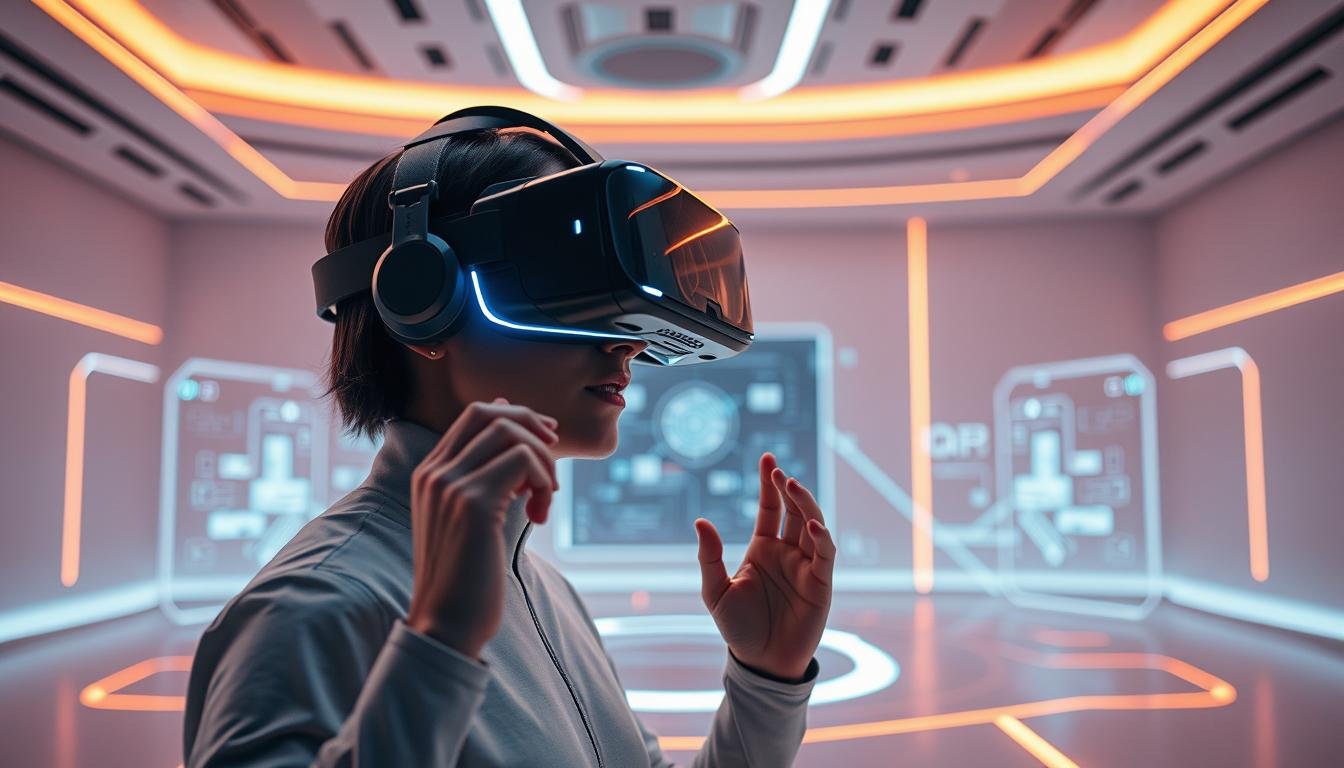Imagine stepping into a virtual classroom where you can explore ancient Rome or diving into a training simulation that feels as real as the job itself. This is the power of virtual reality, a technology reshaping how we learn, work, and play. Immersive experiences are no longer confined to science fiction; they’re becoming integral to our everyday lives.
In 2021, global sales of VR headsets reached 6.1 million units, with projections suggesting an installed base exceeding 34 million soon. Innovations like the Apple Vision Pro are driving this growth, offering users unparalleled experiences. Businesses are leveraging VR to enhance training, streamline operations, and create engaging customer interactions.
From healthcare to education, VR is proving its value. It’s not just about gaming anymore; it’s about transforming industries. This article will explore emerging trends, applications, and technological advancements shaping the future of VR. Whether you’re a consumer or an enterprise, understanding these developments is crucial.
Key Takeaways
- VR headsets sales are projected to grow significantly, with an installed base exceeding 34 million.
- Innovations like the Apple Vision Pro are revolutionising user experiences.
- Businesses are adopting VR for training, operations, and customer engagement.
- VR applications span healthcare, education, and entertainment sectors.
- Understanding VR trends is essential for both consumers and enterprises.
Industry Trends Shaping Virtual Reality
From immersive training simulations to virtual prototyping, VR is reshaping industries worldwide. The technology is no longer confined to gaming; it’s now a powerful tool for businesses and enterprises. Recent data from Statista highlights this shift, showing a significant rise in VR adoption across sectors like healthcare, education, and manufacturing.
Emerging Applications and Use Cases
One of the most exciting trends is the use of VR for training and remote collaboration. Companies are leveraging immersive simulations to train employees in high-risk environments, reducing costs and improving safety. For instance, virtual prototyping allows engineers to test designs in a risk-free setting, speeding up development cycles.
Remote collaboration is another area where VR shines. Teams can meet in virtual spaces, regardless of their physical location, fostering better communication and productivity. This is particularly valuable in industries like architecture and engineering, where visualising complex projects is crucial.
Data-Backed Insights from Recent Research
Recent research underscores the growing role of VR in enterprise solutions. While gaming still accounts for a significant portion of VR revenue, enterprise applications are catching up fast. For example, the global AR and VR gaming market is projected to grow from $12 billion in 2020 to $72.8 billion by 2024, with enterprise solutions driving much of this growth.
Technological advancements are also making VR more accessible. Innovations like the Meta Quest 3 and Apple Vision Pro are lowering entry barriers, while improvements in hardware and software are enhancing user experiences. These developments are paving the way for broader adoption across industries.
To learn more about the transformative trends shaping the virtual reality, explore this detailed analysis.
Innovative Applications in Business and Enterprise
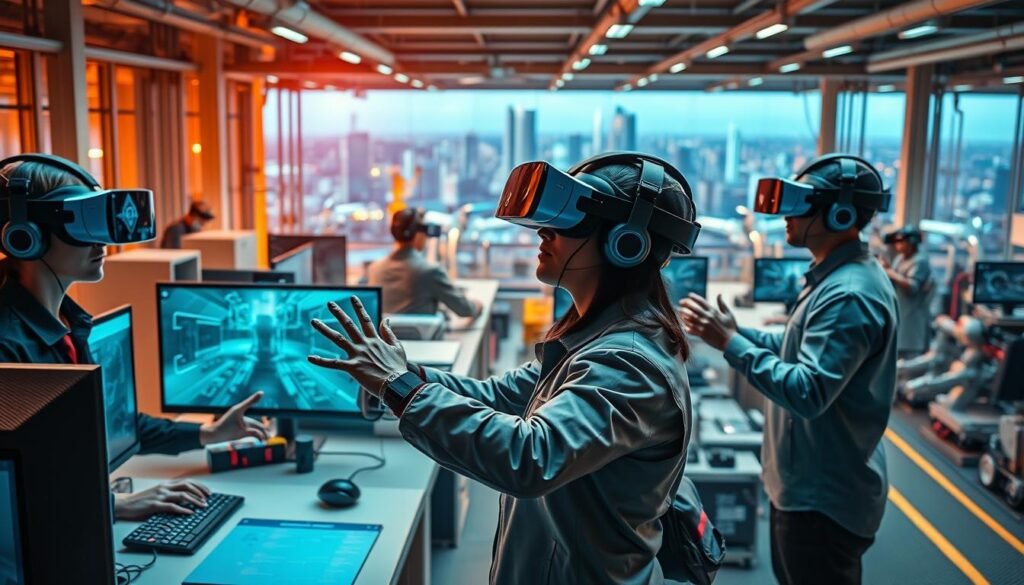
Businesses are embracing virtual reality to revolutionise training and collaboration. This technology is no longer limited to gaming; it’s now a powerful tool for enterprises. From immersive training modules to virtual prototyping, VR is transforming how companies operate and innovate.
Enhancing Training and Remote Collaboration
Immersive training modules replicate real-world scenarios, providing employees with hands-on experience in a safe environment. For example, Rolls Royce uses digital twins to monitor aircraft engines, offering instant insights into performance. This approach reduces costs and improves safety.
Remote collaboration is another area where VR excels. Teams can meet in virtual spaces, regardless of their location, fostering better communication. Companies like Autoliv have created metaverse environments for real-time machine monitoring and collaborative training. This enhances productivity and problem-solving.
Streamlining Product Development
VR is also accelerating product development. Engineers can interact with full-scale digital twins to test designs before manufacturing. This prevents costly errors and speeds up the development cycle. For instance, Bosch uses predictive maintenance strategies powered by VR to monitor machinery in real-time.
These applications benefit both consumer-facing and internal operations. From improving customer experiences to enhancing employee training, VR is proving its value across industries. Companies adopting these solutions are seeing significant efficiency gains and cost reductions.
Transforming Education, Training and Healthcare

Step into a world where learning and healthcare are transformed by immersive virtual environments. This technology is no longer a novelty; it’s a powerful tool reshaping how we educate and heal. From classrooms to operating theatres, VR is making a significant impact.
Immersive Learning Experiences
Education is evolving with VR, offering students a chance to explore complex subjects in a three-dimensional space. For instance, platforms like XReady Lab create virtual simulations that align with international curricula. These tools make abstract concepts tangible, improving engagement and retention.
Teachers can now conduct virtual experiments that are too dangerous or impractical in traditional classrooms. This approach not only enhances creativity but also fosters critical thinking. Students receive immediate feedback, accelerating their learning process.
Virtual Surgical Simulations
In healthcare, VR is revolutionising training for medical professionals. Surgical simulations provide a risk-free environment to practice complex procedures. Studies show that VR-based training improves performance and retention rates significantly compared to traditional methods.
Pharmaceutical companies are also leveraging this technology to educate healthcare professionals. VR simulations help them understand conditions like Alzheimer’s or Parkinson’s, fostering empathy and better decision-making. This service is transforming how medical knowledge is shared and applied.
“VR-based surgical training has been shown to improve performance and retention rates significantly compared to traditional methods.”
| Platform | Application | Benefit |
|---|---|---|
| XReady Lab | Education Simulations | Enhanced Engagement |
| VR Surgical Simulators | Medical Training | Improved Accuracy |
| Pharma VR Programs | Healthcare Education | Empathy Building |
These advancements are not just improving business operations but also enhancing the quality of education and healthcare. The long-term benefits of VR in these sectors are undeniable, paving the way for a more informed and skilled workforce.
Evolving Consumer Experiences and Social Interactions
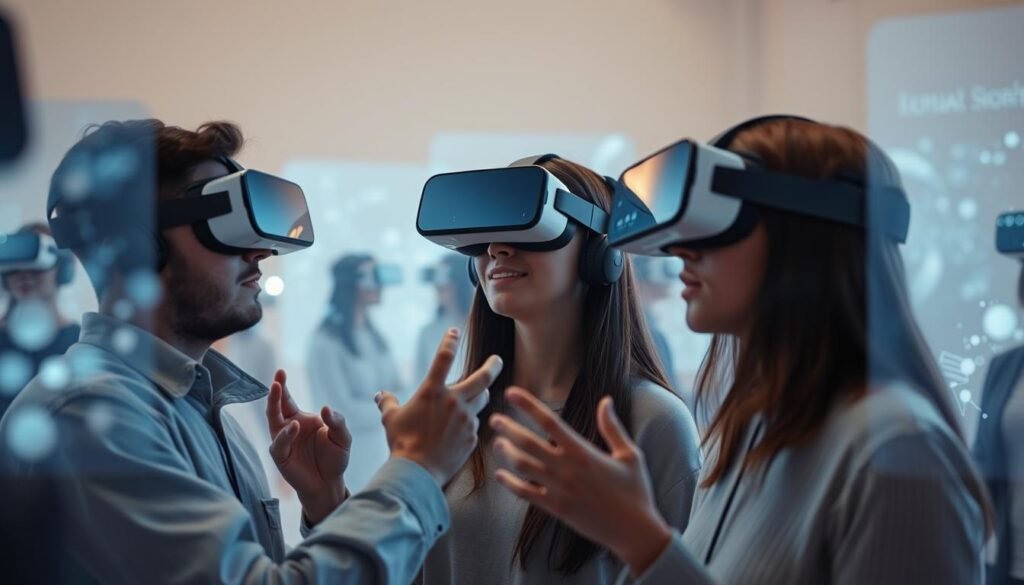
Picture yourself attending a virtual concert where the energy feels as real as being in the front row. This is just one way virtual reality is transforming how we interact and entertain ourselves. Over the past year, consumer adoption of VR has surged, driven by more engaging and immersive applications.
Immersive Entertainment and Gaming
Entertainment and gaming are at the forefront of this evolution. Platforms like Meta Quest and PlayStation VR are redefining how we experience media. Virtual concerts, interactive gaming, and immersive storytelling are becoming mainstream, offering users unparalleled experiences.
For instance, Fortnite’s virtual concerts have attracted millions of participants, blending gaming with live events. This shift is not just about fun; it’s about creating shared experiences that feel real. As technology advances, these applications will only become more sophisticated.
Community and Collaborative Virtual Spaces
Social interactions are also evolving. Virtual spaces like Horizon Worlds allow users to meet, collaborate, and socialise in entirely new ways. These platforms foster community engagement, enabling people to connect regardless of physical location.
Remote social gatherings and virtual meetups are gaining popularity, especially among younger audiences. This trend is reshaping how we think about socialising, making it more inclusive and accessible. The market for these platforms is expected to grow significantly in the coming years.
| Platform | Application | Impact |
|---|---|---|
| Meta Quest | Gaming and Entertainment | Enhanced Immersion |
| Horizon Worlds | Social Interaction | Community Building |
| Fortnite | Virtual Concerts | Shared Experiences |
These advancements are driving consumer adoption and reshaping the entertainment market. As technology continues to evolve, the possibilities for immersive experiences are endless. Whether you’re gaming, attending a virtual event, or socialising in a digital space, VR is changing the way we connect and engage.
Sustainable Market Growth and Future Predictions
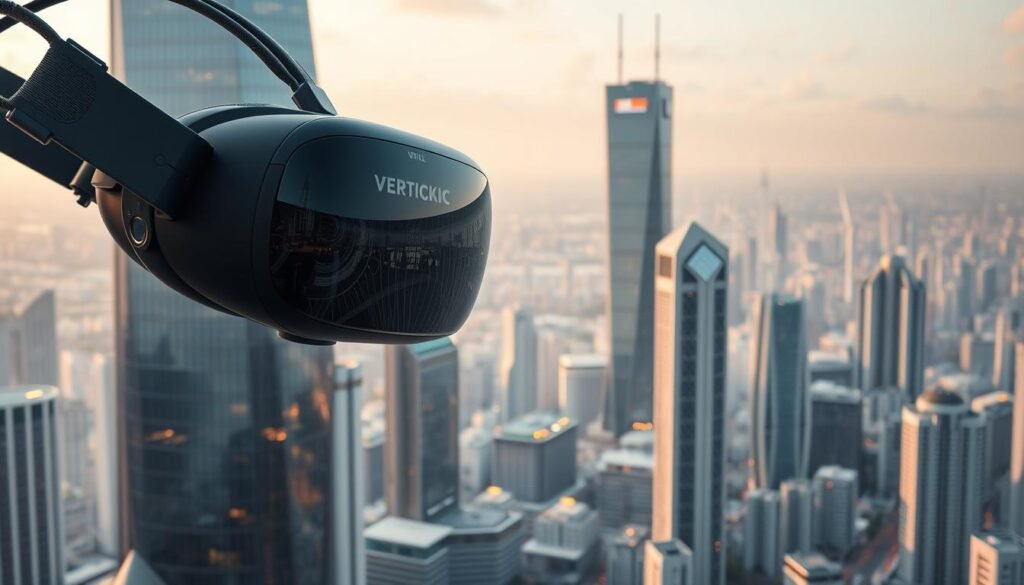
As virtual reality continues to evolve, its market growth is becoming a cornerstone of technological innovation. Data from Statista and other market research highlights a significant expansion in the global VR installed base. Innovative companies are driving this sustainable growth, reshaping industries and creating new opportunities.
Projected Global Market Expansion
The VR industry is poised for remarkable growth. By 2025, the global market is expected to exceed $72 billion, driven by advancements in headset designs and software integration. Companies are investing heavily in research and development to create more immersive and accessible experiences.
New headset designs are playing a pivotal role in this expansion. Lightweight, ergonomic, and affordable models are making VR more accessible to consumers and enterprises alike. These innovations are not only enhancing user experiences but also fostering broader adoption across sectors.
Innovations in Healthcare and Collaboration
Healthcare is one of the most promising areas for VR growth. Companies are leveraging this technology for surgical training, patient therapy, and medical education. For instance, VR simulations allow surgeons to practice complex procedures in a risk-free environment, improving accuracy and patient outcomes.
Collaboration tools are also transforming how teams work. Virtual meeting spaces enable seamless communication, regardless of physical location. This is particularly valuable in industries like architecture and engineering, where visualising complex projects is essential.
Future Opportunities and Trends
The future of VR is brimming with potential. Emerging trends include the integration of AI for personalised experiences and the rise of 5G for faster data transmission. These advancements will further enhance the capabilities of VR, making it an indispensable tool across industries.
| Trend | Impact |
|---|---|
| AI Integration | Personalised User Experiences |
| 5G Technology | Faster Data Transmission |
| Lightweight Headsets | Increased Accessibility |
For a deeper dive into the transformative trends shaping this industry, explore this detailed analysis. The possibilities are endless, and the journey has only just begun.
Exploring The Future of VR: Trends and Predictions
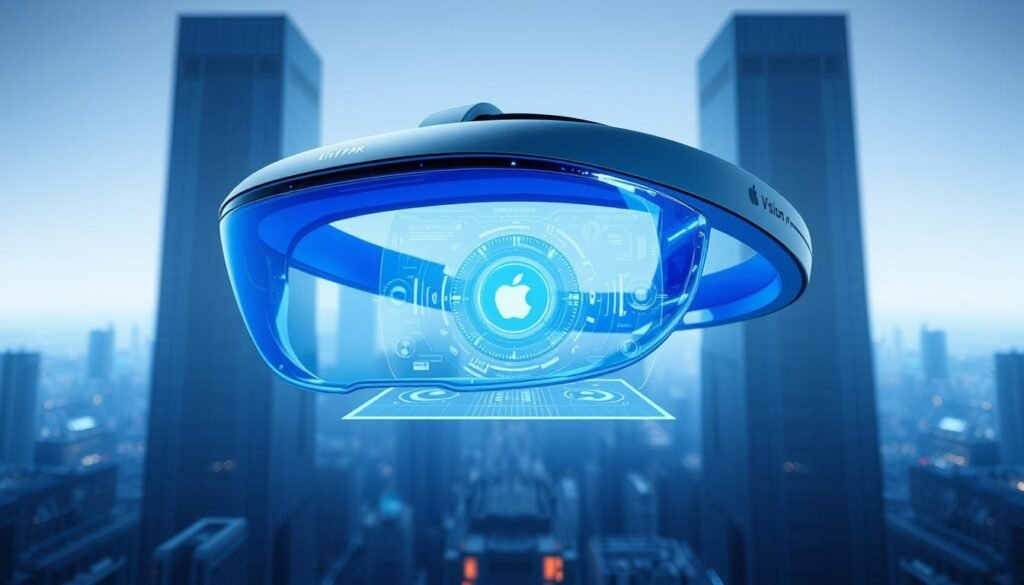
Apple Vision Pro is setting new benchmarks in both consumer and enterprise VR applications. Its release has sparked significant discussion in news and reviews, with early datum indicating shifts in adoption patterns. This section delves into its influence, emerging trends, and what lies ahead.
Impact of the Apple Vision Pro
The Apple Vision Pro has redefined expectations for immersive content. Its advanced features, such as high-resolution displays and intuitive controls, are attracting both consumers and enterprises. Early news reports highlight its potential in sectors like healthcare, where it’s being used for surgical training and patient therapy.
Video reviews, such as those by MKBHD, have played a crucial role in shaping perceptions. These reviews showcase its capabilities, driving consumer interest and enterprise adoption. As more datum becomes available, its influence on the market is expected to grow.
Shifts in Consumer Adoption and Enterprise Use
Consumer behaviour is evolving with the introduction of the Apple Vision Pro. Users are increasingly seeking immersive content, from gaming to virtual events. Enterprises, on the other hand, are leveraging its capabilities for training, collaboration, and product development.
- Healthcare professionals are using it for virtual surgical simulations, improving accuracy and patient outcomes.
- Businesses are adopting it for remote collaboration, enhancing productivity and communication.
- Educational institutions are integrating it into curricula, offering students immersive learning experiences.
These shifts are supported by datum indicating a rise in adoption rates across sectors. For instance, the global VR market is projected to grow significantly, driven by innovations like the Apple Vision Pro. Learn more about these trends here.
“The Apple Vision Pro is not just a product; it’s a catalyst for change in how we interact with technology.”
Looking ahead, the integration of AI and 5G will further enhance its capabilities. These advancements will make VR more accessible and impactful, paving the way for broader adoption. Whether you’re a consumer or an enterprise, understanding these trends is crucial to staying ahead in the evolving landscape of immersive technology.
Metaverse and the Convergence of Digital Worlds

Envision a digital realm where boundaries between worlds dissolve, creating a unified space for interaction and innovation. The metaverse is driving this transformation, blending multiple digital environments into one seamless ecosystem. This convergence is reshaping how we connect, work, and play.
Unified Virtual Ecosystems
Unified virtual ecosystems are at the heart of the metaverse. They allow users to interact across platforms effortlessly, enhancing experiences in gaming, socialising, and enterprise applications. Brands like Meta and Apple are leading this charge, with innovations like the Apple Vision Pro setting new standards.
Headset displays and interface improvements play a crucial role in creating these seamless experiences. For instance, the Vision Pro offers high-resolution visuals and intuitive controls, making it easier to navigate virtual spaces. These advancements are not just about better hardware; they’re about creating a more immersive and connected future.
In the consumer market, the metaverse is transforming entertainment and social interactions. Platforms like Horizon Worlds and Fortnite are redefining how we engage with digital content. For enterprises, it’s enabling remote collaboration and virtual prototyping, streamlining operations and reducing costs.
“The metaverse is not just a concept; it’s a platform for innovation, connection, and growth.”
As the metaverse evolves, its potential impact on both consumer and enterprise markets is immense. The integration of AI and 5G will further enhance its capabilities, making it more accessible and impactful. To explore this metaverse journey, delve into how it’s shaping the future of digital interaction.
Conclusion
Immersive technologies are reshaping how we interact with the digital and physical worlds. From business to education, healthcare, and entertainment, these innovations are driving significant change. Advances like the Apple Vision Pro and improved headset designs are making the virtual world more accessible and impactful.
Across the industry, VR is proving to be a game-changer. It’s enhancing training, improving collaboration, and creating new opportunities for growth. Whether it’s surgical simulations or immersive learning, the potential is vast. These solutions are not just transforming operations but also enriching experiences.
As digital convergence accelerates, the metaverse is becoming a reality. This unified space offers endless possibilities for innovation and connection. Exploring these advancements now can position you at the forefront of this evolving landscape. Embrace the potential of immersive technologies and consider investing in VR solutions for a brighter tomorrow.
FAQ
What are the key trends shaping the virtual reality industry?
How is virtual reality being used in business and enterprise?
What role does VR play in education and healthcare?
How are consumer experiences evolving with VR?
How is AI integrated into virtual reality?
What is the impact of the Apple Vision Pro on the VR market?
How is the metaverse influencing virtual reality?
What are the latest developments in VR hardware and software?
What does the future hold for virtual reality adoption?
Source Links
- Emerging Technology Session Explores the Impact of AR, VR, and AI on Construction
- Virtual Reality Applications in the Real World
- Unity’s Role in Shaping the AR/VR Landscape: A Post-Apple Evolution
- Meta Quest v74 Update Enhances VR Productivity Features – XR Today
- AR and VR in Gaming and the Future Of Play – ComputerCity
- Azure Mixed Reality Solutions: Building the Future of Digital Transformation – XR Today
- Immersive technologies in aerospace: From innovation to necessity
- Virtual reality is transforming Healthcare Communications
- Identifying Research Priorities in Digital Education for Health Care: Umbrella Review and Modified Delphi Method Study
- XReadyLab.com | Best VR education | Free 3D models | Science | Tools for teachers | VR classroom How VR Can Enhance Critical Thinking and Creativity in STEM %
- The many ways AI can empower XR | Computer Weekly
- The Future of Social Media: Virtual Reality, Augmented Reality, and Beyond
- Temple professor’s groundbreaking use of AI and virtual reality revolutionizes teacher education
- XReadyLab.com | Best VR education | Free 3D models | Science | Tools for teachers | VR classroom The Intersection of VR and AI in the Future of School Education %
- 2025 Predictions for Sustainability – Sunrise Geek
- 2025 telecommunications industry outlook
- Apple eyes AI push on the Vision Pro. What it needs is a health pivot
- Frontiers | Practical considerations of clinical XR (AR/VR) deployments
- Design and usability evaluation of an immersive virtual reality mirrored hand system for upper limb stroke rehabilitation – Scientific Reports
- Trends for The future of Enhanced Internet | Expereo
- Reliability and validity of a self-developed virtual reality-based test battery for assessing motor skills in sports performance – Scientific Reports
- Computers
- Are We Ready for the Metaverse? Implications, Legal Landscape, and Recommendations for Responsible Development – Digital Society
- The irresistible marriage of AI and XR | Computer Weekly
- Metaverse: Trends, Insights, and Innovations
- Exploring the Applications of Virtual Reality in Medical Training
- Comparing the effectiveness of virtual reality vs 2D display-based cue reactivity paradigms to induce nicotine-craving: a behavioral and psychophysiological study – Scientific Reports
- Virtual Reality Interventions and Chronic Pain: Scoping Review
